A Guide to Bale Spear Attachments in Agriculture
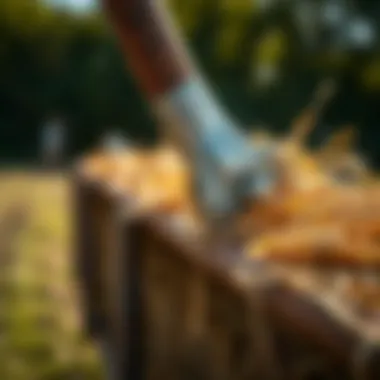
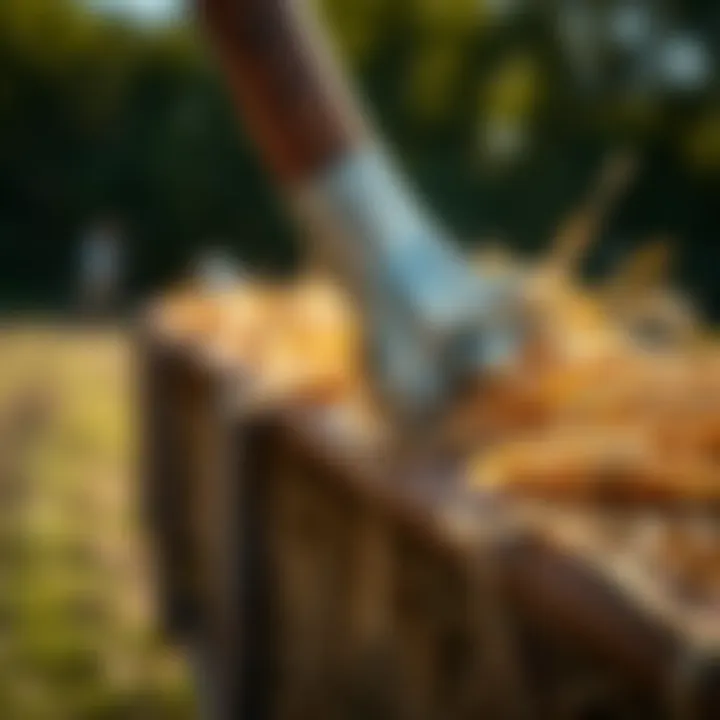
Intro
In the world of agriculture, efficiency and functionality often dictate the methods farmers employ to handle their resources. One tool that has carved out its niche is the bale spear attachment. For those who might not be as familiar, these attachments are devices connected to tractors or loaders, designed primarily to lift and manage large bales of hay or straw. They seem rather straightforward but their significance in modern agricultural practices cannot be understated. Not only do these tools save time and manpower, but they also play a critical role in shaping operational practices on farms.
As farmers continually seek to improve productivity, the baler spear attachment stands out due to its ability to streamline the handling process. With the demand for hay and straw rising amid changing climate conditions and farming methods, it becomes imperative to understand how these tools function and the benefits they offer. One must also be attuned to the latest trends and developments that inform their use, ensuring that farmers are utilizing the best practices available. This guide aims to unfold the layers of functionality, selection considerations, maintenance, and advancements in bale spear attachments, offering insights for veteran agronomists and budding farmers alike.
Understanding Bale Spear Attachments
Bale spear attachments are essential tools in the agricultural landscape, particularly in modern farming operations where efficiency and productivity reign supreme. These attachments profoundly simplify the handling of large hay or straw bales, reducing the human effort needed to move them while also mitigating damage during the process. Having a solid understanding of these tools not only equips farmers with the know-how to maximize their use but also enhances overall operational efficiency, making it a key focus in this guide.
Definition and Overview
Bale spear attachments consist of a long, pointed spear or rod that is used for lifting and transporting bales of hay or straw. They typically attach to tractors or skid steers, making it easy to load and stack bales either for storage or transport. These tools come in various designs, tailored to fit different types of farming equipment.
In their most basic form, a bale spear could be viewed as an extension of the machinery. It grabs and supports the weight of bales, thereby transferring that weight away from the farmer’s manual labor. The effectiveness of a bale spear shows in its ability to pierce through the center of the bale, stabilizing it as it's hoisted onto a tractor or loader. This aspect is crucial since improper lifting can lead to spills or damaged bales and can waste valuable time.
Historical Development
Historically, the handling of bales was labor-intensive and time-consuming. Before the introduction of specialized equipment, farmers relied heavily on manual labor—often wrestling with heavy bales by hand. As agricultural practices evolved, so did the tools and methods used for moving bales. The introduction of the baler in the early 20th century marked a significant change, allowing farmers to produce uniform bales that were easier to handle.
As tractors became more prevalent in the agricultural sector, the need for efficient attachments grew rapidly. The first bale spear attachments were relatively simple, often constructed from heavy steel, to ensure durability. Advancements in material technology introduced lighter and stronger materials, allowing for designs that not only offered better performance but were also easier on machinery.
Today, bale spears have notably evolved, with hydraulic options available that offer enhanced precision, allowing farmers to move bales into tight spaces or stack them higher with less risk of accidents. This evolution mirrors the broader trends in agricultural technology, focusing on increased efficiency and sustainability. Farmers are no longer just using tools; they’re integrating sophisticated equipment that reflects the complexity of modern agricultural demands.
"The development of bale spear attachments is a testament to how innovation can transform traditional farming methods into something more efficient and effective, helping farmers do more with less."
Ultimately, understanding the intricacies and historical context of bale spear attachments sets a solid foundation for appreciating their current applications and benefits in the field.
Types of Bale Spear Attachments
Understanding the different types of bale spear attachments is crucial for farmers looking to optimize their operations. Each type serves unique functions and offers distinct advantages that can significantly enhance productivity in agricultural practices. Choosing the right bale spear attachment is not just about preference; it’s about matching the spear type to specific farming needs, equipment compatibility, and operational requirements. In this section, we will delve into two main categories: fixed bale spear types and hydraulic or auger bale spears. Each of these types has its place on the farm, offering benefits that can improve efficiency and effectiveness in handling bales.
Fixed Bale Spear Types
Fixed bale spear attachments are the most traditional and widely used type. These come in a variety of designs and sizes, typically designed to be mounted on the front of a tractor or loader. The simplicity of fixed bale spears makes them a popular choice, especially for smaller operations or those just starting out.
The design of fixed bale spears usually involves a long, sturdy spear that can penetrate deep into a bale. This direct-contact method makes it easier to lift and transport bales with minimal damage. Among the key benefits of using fixed bale spears are their cost-effectiveness and ease of use. Farmers don’t need to worry about complicated hydraulic systems or electronics, just a straightforward process of attaching the spear and getting to work.
However, it’s essential to consider the specific tasks you intend to perform when using fixed bale spears. For instance, while these attachments are excellent for lifting and moving hay bales, they may not provide the same versatility when dealing with heavier materials or uneven terrain. Moreover, fixed bale spears could struggle with larger bales unless appropriately sized, thus requiring farmers to assess their individual needs first.
Hydraulic and Auger Bale Spears
On the other hand, hydraulic and auger bale spears represent a more advanced option that incorporates technology to enhance performance. Hydraulic bale spears utilize hydraulic systems that allow for adjustable depth and angle of the spear, offering greater precision during operation. This flexibility means that farmers can tackle a wider range of tasks, such as stacking bales higher or maneuvering them into tight spaces with ease.
Auger bale spears, in particular, have gained popularity in recent years. These attachments include a helix-designed spear that allows farmers to not just lift bales but also ensure they penetrate and secure the bale material firmly. This characteristic minimizes the risk of dropping or tearing bales during transport, which helps to maintain the quality of the hay or straw.
When making a choice between hydraulic and fixed options, it’s important for farmers to evaluate their farm's operations thoroughly. Investing in hydraulic or auger bale spears might involve a higher upfront cost, but the efficiency gained could justify the expense in the long run. The versatility they provide can adapt to various agricultural tasks, making daily operations smoother.
Ultimately, selecting the right type of bale spear attachment hinges on understanding your operational needs and the demands of your agricultural activities. It’s not just about making a choice based on price or features; it’s about strategically selecting an attachment that aligns with your farming goals.
Key Components of Bale Spear Attachments
Understanding the essential components of bale spear attachments is fundamental for efficient and effective usage in agriculture. These components ensure smooth operation and maximize productivity when handling bales, whether hay or straw. A well-constructed attachment not only facilitates lifting and transporting bales but also integrates well with existing equipment. The significance of these components cannot be understated; it influences everything from performance to safety during operation.
Spears and Materials
The spear is arguably the heart of the bale spear attachment. Its primary role is to penetrate the bale, holding it securely while it’s being moved. A common mistake among new users is underestimating the importance of spear type and material used in its construction. Typically, these spears are made from heavy-duty steel, designed for strength and durability. Some manufacturers are opting for advanced alloy materials, which can provide similar or even superior strength at reduced weight.
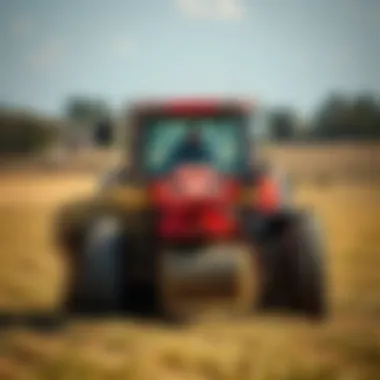
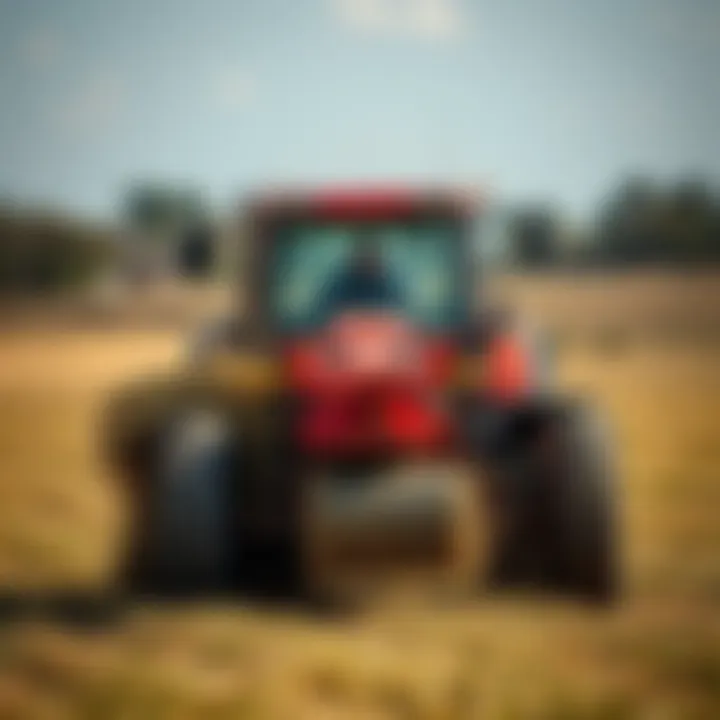
A spear's length also plays a crucial role; longer spears can reach deeper into larger bales or stack them higher, but they might be unwieldy for smaller or lighter tasks. Using a spear made from high-carbon steel can offer not just longevity but also a degree of flexibility that helps absorb shocks while moving.
Here are some key material considerations:
- Strength: Ensure the spear can handle the weight of the bales without bending or breaking.
- Weight: Lighter materials can enhance maneuverability but may compromise on strength.
- Coatings: Some spears come with protective coatings to prevent rust, which can extend their lifespan significantly.
"Choosing the right spear material can drastically reduce wear and tear on both your equipment and your bales."
Mounting Structures and Compatibility
Another vital component of a bale spear attachment is its mounting structure. The mounting system determines how well the spear attaches to the loader or tractor, and it must be compatible with various machines used on the farm. Compatibility issues can lead to inefficient operations and sometimes even accidents.
Most modern bale spear attachments utilize a universal mounting system, which allows them to fit a variety of loaders. However, not all loaders are the same in specifications. Check details like pin size and distance between the mounting holes to ensure a proper fit.
Also, consider whether the mounting structure allows for easy attachment and detachment. Some designs require tools, while others employ quick-release mechanisms for efficiency. Here are key points to remember:
- Check Loader Specifications: Ensure that the spear matches your loader's lift capacity and design.
- Installation Ease: Look for attachments that offer quick attachment mechanisms to reduce downtime.
- Versatility: Some spears offer adjustable mounting options to accommodate different types of machinery.
By comprehending these components—spears and mounting structures—farmers can efficiently choose and operate bale spear attachments, enhancing both ease of use and safety in their agricultural practices. Whether managing a large-scale operation or a small farm, understanding these aspects will provide a solid foundation for improved productivity.
Operational Mechanics
Understanding the operational mechanics of bale spear attachments is essential for anyone involved in the agricultural sector. This knowledge not only helps farmers enhance their productivity but also informs best practices for safety and efficiency. The mechanics behind these tools influence how effectively they can move heavy bales without causing damage to the product itself or risking injury to the operator or bystanders.
How Bale Spears Function
Bale spears operate primarily through a straightforward but effective mechanism. The design usually includes a long spear, often made of high-carbon steel, which is capable of piercing through dense bales. Here are some key aspects of how bale spears function:
- Insertion and Removal: Bale spears are mounted on tractors or loaders. Once activated, the sharp tip of the spear can easily penetrate the bale. The mechanism relies on the weight and hydraulic force of the equipment to drive the spear deep into the bale and then extract it without loss.
- Balance and Stability: Proper lift and balance are crucial for effective operation. Farmers must focus on the center of gravity of the equipment and the load being carried to prevent tipping or swaying as they maneuver the bales.
- Versatility: Many spears come with adjustable lengths or additional features that allow the operator to customize their reach. This versatility enables handling of various bale sizes, from small squares to large round bales.
Overall, the effectiveness of bale spears is a function of their design and the equipment they are attached to, making them invaluable in modern agricultural practices.
Safety Features and Operational Guidelines
Operating bale spears requires adherence to safety protocols to minimize the risk of accidents. Here are prominent safety features and guidelines:
- Safety Shields: Many modern bale spears come equipped with safety shields or guards to prevent accidental injury from the spear when not in use.
- Operator Training: Comprehensive training sessions for operators help ensure that they are familiar with the handling and storage of equipment. Proper technique during operation can greatly reduce risks associated with lifting and transporting bales.
- Regular Inspections: Routine checks for wear and tear on the spear can help prevent failures during operation. Operators should look for any signs of bending or cracking that could compromise functionality.
- Work Area Awareness: Operators should maintain situational awareness of their surroundings. Using spotters in areas where visibility is limited is crucial to keeping others safe during bale handling.
In an environment where efficiency is critical, neglecting safety can lead to costly accidents. By adhering to the above guidelines, farmers can effectively mitigate risks associated with using bale spear attachments.
"Understanding the operational mechanics and prioritizing safety ain't just smart; it's the lifeblood of a well-run agricultural operation."
Advantages of Using Bale Spears
Understanding the advantages of bale spears is crucial for any farmer aiming to optimize their operations. These attachments not only elevate efficiency in hay and straw handling but also have significant implications for labor cost reduction and bale preservation. By delving deeper into these facets, we can clearly see how bale spear attachments play a pivotal role in modern agriculture.
Efficiency in Handling Bales
Bale spears allow for a swift and efficient approach to moving bales. Engaging these attachments makes what once could take hours, possible in mere moments. Thanks to their design, the sharp, pointed spear easily penetrates and grips bales, allowing for seamless loading and unloading. Hence, when you're moving hay from the field to storage or a feeding area, the time saved is often immense.
Consider a farmer, Jim, who once spent half a day using manual methods to load his bales. After incorporating a bale spear, that time dramatically dropped to about an hour. This efficiency translates directly into more productive hours that can be spent on crucial tasks such as crop monitoring or livestock care, making each working day more fruitful.
Reduction of Labor Costs
In many agricultural operations, labor can be a significant expense. Bale spears help mitigate these costs tremendously. With the speed of bale handling greatly increased, the number of workers needed for this task can often be reduced. Instead of having several team members moving bales manually, one person can operate a tractor equipped with a spear, finishing the job in a fraction of the time.
For instance, a small farm using a bale spear may find they can get by with one less employee during peak season. This isn't just a minor savings; it accumulates over weeks, translating into hours of wages that can be redirected toward other expenses like equipment upgrades or even crop inputs.


Minimized Damage to Bales
Bale handling often comes with the risk of damage. Traditional methods can cause tearing, crushing, or other forms of deterioration. In contrast, bale spears are designed to minimize such risks effectively. The engineered tips enable a secure hold without squeezing or misaligning the bales, preserving both their quality and weight.
Moreover, when injuries to bales happen, it’s often a costly affair. Damaged bales, especially in terms of feed or fodder, can lead to waste, which is a direct hit to a farm’s bottom line. Using a bale spear not only helps in maintaining the integrity of the bales but assures that the nutrition they carry is kept intact until needed.
"In agriculture, it's about working smarter, not harder. Bale spears epitomize this concept."
In summary, the advantages of using bale spears are multifaceted, impacting efficiency, labor cost, and the integrity of bales. Their adaptability makes them an essential tool in any farmer's shed, providing tangible solutions to everyday challenges on the farm. As we continue to explore the subsequent sections, let’s keep these benefits in mind, illustrating just how bale spear attachments shape agricultural practices.
Choosing the Right Bale Spear Attachment
Selecting the appropriate bale spear attachment is vital for any farmer or agricultural worker looking to enhance their efficiency in handling bales. While it may seem like a straightforward aspect of farm machinery, the right choice can greatly influence not only the effectiveness of the operation but also the long-term durability of both the spear and the equipment it attaches to. In this section, we will delve into the critical factors and compatibility aspects that need to be considered in making the selection process clearer and more informed.
Factors to Consider
When choosing a bale spear attachment, there are several factors that come into play, each with its own nuances that could affect your overall productivity:
- Type of Bales: Different types of bales—be it round or square—require specific spear designs. Round bales typically need longer spears for stability, while square bales can be managed effectively with shorter spears. The size and weight also come into consideration, as heavier bales need more robust attachments.
- Ton Rating: It’s crucial to look at the ton rating of the bale spear attachment. Each spear has a limit to how much it can handle safely. Overloading a spear could lead to disastrous failures, which not only risks injury but could also lead to lost time and additional costs.
- Material Construction: The quality of materials used in the spear's construction also determines its lifespan and effectiveness. Steel is a common choice due to its strength, but there are also composite materials that may be lighter and still provide good strength.
- Cost vs. Benefit: A higher price tag doesn't always equate to better performance. It’s important to weigh the potential benefits against your specific requirements and your budget. Sometimes, a slightly less expensive spear can prove to be better in real-world situations.
"Choosing the right bale spear is not a matter of picking out the shinies; it's about what gets the job done without fuss."
Compatibility with Equipment
The compatibility of a bale spear attachment with the existing equipment is an often undervalued factor in the selection process. If the spear isn’t a proper fit for your machinery, it may not function effectively or could cause undue damage.
- Attachment Method: Different bale spears utilize varying attachment systems—some might require pins, while others may utilize a quick-attach mechanism. Make sure that the spear you select is easily compatible with your loader or tractor.
- Loaders and Tractors: Check to see if the bale spear matches the specifications of your loader or tractor. This involves checking the mounting frame and ensuring that the spear can fit the hydraulic system where necessary.
- Weight Distribution: Understanding how the weight of the bale spear and the load it carries is distributed across your machinery can affect both performance and safety. A mismatched weight distribution can lead to instability, which poses hazards during operation.
- Hydraulic Systems: If using a hydraulic spear, ensure that your equipment's hydraulics can handle the necessary flow and pressure requirements. A mismatch can lead to inefficient operation or even damage.
Ultimately, choosing the right bale spear attachment requires a detailed understanding of both your operational needs and the capabilities of your equipment. By considering the mentioned factors and ensuring compatibility, farmers can prevent costly mistakes and enhance their efficiency during bale handling.
Maintenance and Care for Bale Spears
Proper maintenance and care of bale spear attachments is essential in ensuring their longevity and effective functionality. This not only safeguards the equipment but also maximizes efficiency during operation. A clean and well-maintained bale spear can perform better, facilitating quicker loading and transport of hay and straw. Neglecting maintenance can lead to mechanical failures, posing safety risks and increasing operational downtime. Here, we will explore several pivotal aspects of maintaining these crucial agricultural tools, including routine practices and troubleshooting common issues.
Regular Maintenance Practices
Keeping bale spears in top shape requires consistent attention. Here’s a list of recommended practices to follow:
- Inspect Regularly: Make it a habit to check the spear attachments for any signs of wear and tear. Look for cracks, bent spear tips, and loose bolts that could cause operational issues.
- Clean After Use: Hay and straw can accumulate debris that affects performance. After each use, ensure you clean the spears thoroughly to avoid clogs or rust. A simple pressure wash can often do the trick.
- Lubricate Moving Parts: Apply grease to joints and pivot points to ensure smooth movement and to prevent rust from forming. A little lubrication can go a long way in maintaining operational efficiency.
- Store Properly: When not in use, store the bale spear in a sheltered environment. Keeping it out of the elements minimizes the risk of corrosion and extends the lifespan of the attachment. Always make sure it’s positioned safely to prevent accidental damage.
- Check Compatibility: Ensure your bale spear attachment remains compatible with the machinery it’s mounted on. Regularly check for any alterations in the equipment that could affect the efficacy of the spear.
Regular maintenance of bale spear attachments not only extends their lifespan but also improves workplace safety by preventing unexpected failures.
Troubleshooting Common Issues
Even with diligent care, complications may arise during operation. Here are some common issues you may face with bale spears and how to address them:
- Spear Won’t Penetrate Bales: If the spear struggles to penetrate, first check the sharpness of the spear tips. Dull tips can make it hard to lift heavy bales. A file can be used to sharpen them if necessary.
- Bale Slippage: If bales are slipping off the spears, inspect the configuration of the spears. Ensure they are correctly aligned and closely spaced to hold bales securely.
- Unusual Noises: If you hear grinding or clinking while operating, look for loose parts. Tighten bolts and fittings, and replace any damaged components immediately.
- Hydraulic Issues: If using hydraulic models, check hydraulic fluid levels and inspect hoses for leaks. Low fluid levels can lead to reduced functioning.
- Rust Formation: If rust appears, it’s crucial to remove it quickly. Use a rust remover and follow up with proper lubrication to protect the surface from future rusting.
By prioritizing maintenance and being proactive about troubleshooting, users can greatly enhance the performance and longevity of bale spear attachments, ensuring they remain effective tools in agricultural operations.
Technological Advancements in Bale Spears
As agriculture continues to evolve, the tools and equipment utilized by farmers are increasingly sophisticated. This section focuses on technological advancements in bale spears, which play a crucial role in improving operational efficiency and productivity. The growth of new technologies in this area not only meets the demands of modern farming but also poses new considerations for farmers deciding on the right bale spear attachment.
Innovations in Design
Recent innovations in the design of bale spear attachments reflect the broader trends in agricultural technology aimed at enhancing usability and functionality. Manufacturers are increasingly investing in high-quality materials and streamlined designs to alleviate the physical burdens associated with bale handling. One notable advancement is the development of lighter yet stronger spear shafts. Materials like high-strength steel and composite materials have emerged, offering increased durability without unnecessary weight.
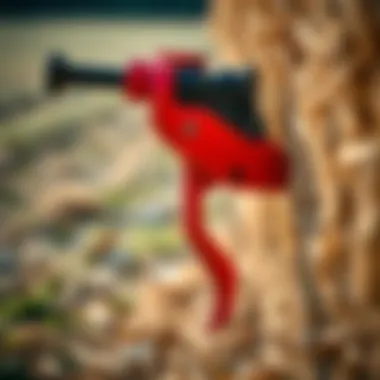
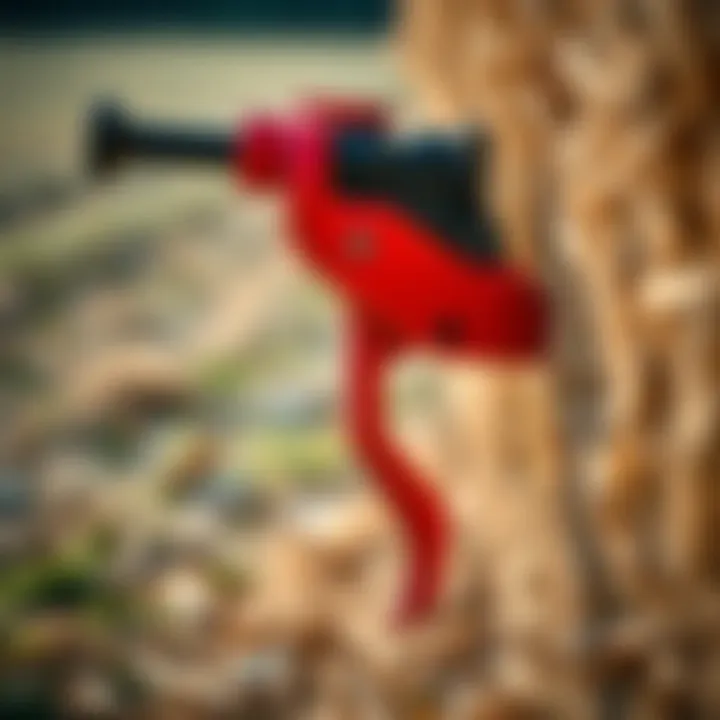
Farmers often find that these innovations facilitate easier maneuvering, particularly in tighter spaces where agility is essential. Additionally, designs equipped with replaceable tips extend the lifespan of these attachments, making maintenance simpler and more cost-effective. When farmers can replace just the spear tip rather than the entire spear, operational costs decrease substantially over time.
Moreover, some modern designs incorporate features such as variable spear angle adjustments, which allow operators to optimize the entry angle based on the bale's size and condition. This adjustability helps in minimizing damage to the bales during handling, addressing one of the key issues faced by farmers.
Integrating Smart Technology
The integration of smart technology into bale spear attachments is a game changer for the agriculture sector. Smart features such as sensors and connectivity options are becoming more common, making these tools not just simpler to use but smarter in response to operational needs. For example, sensors can provide real-time data on the weight of the bales being lifted, helping farmers ensure they are within the capacity limits of their equipment.
Connectivity through mobile apps allows operators to track their bale handling operations from their smartphone or tablet, enabling them to keep an eye on efficiency metrics and optimize their workflows. This data-driven approach provides insights that can lead to improved decision-making, such as when to harvest or how to allocate resources effectively.
"The future of agricultural technology lies in the seamless integration of smart functionality, enabling farmers to make informed choices based on data."
Moreover, advancements in automation are being slowly introduced. For instance, automated bale spear attachments could soon be capable of navigating autonomously across the farm, effectively reducing labor costs while maintaining high levels of productivity.
In sum, the technological advancements in bale spear attachments serve to propel efficiency and effectiveness in managing bales. As farmers embrace these innovations, they not only improve their operational practices but also contribute to a more sustainable agricultural future. As technology progresses, so too will the capabilities of these essential tools in the agricultural toolkit.
Real-World Applications and Case Studies
Bale spear attachments play a crucial role in modern agriculture, making the handling of bales more efficient and effective. Their real-world applications can vary significantly based on the needs of different types of farms. Real-life case studies can help illuminate the various benefits and considerations involved when employing these tools in farming operations.
Commercial Farms
For larger commercial farms, bale spear attachments serve a variety of vital functions. These farms often deal with vast quantities of hay or straw, making efficiency paramount. A leading dairy farm in Wisconsin recently integrated hydraulic bale spears into their operations. These attachments not only streamlined bale handling but also allowed for quick movement during feeding times. With the ability to lift several bales at once, the farm maximized its productivity—reducing hours spent on routine tasks.
The farmers found that using these spears minimized damage to the bales themselves, which is critical for maintaining quality feed. Improper handling can lead to increased waste and expenses, so having a reliable bale spear that protects the bales while handling them is a game-changer. Moreover, hydraulic attachments reduce the physical strain on operators, which can lead to lower injury rates over time.
"Efficiency in handling bales was our primary goal, and investing in hydraulic bale spears was the best decision we made this year," shared the farm's manager during an interview with Modern Farmer Magazine.
In addition to improving efficiency, these attachments allow commercial farms to scale operations. Farms can easily meet fluctuating demands without overextending their workforce, thus adapting fluidly to market conditions. This strategic flexibility is crucial in an industry where timing can make or break a harvest season.
Smallholder Farms
On the other end of the spectrum, smallholder farms reap significant benefits from the use of bale spear attachments as well. These farms often operate with limited resources and labor, making efficiency even more critical. For instance, a small-scale organic farm in Vermont utilizes fixed bale spears attached to a compact tractor. This allows them to handle bales with precision, thereby conserving both time and energy.
Unlike larger commercial entities, smallholder farmers often need to balance various tasks, from planting to harvest. The use of bale spears thus enables them to optimize their workflow. For example, one farmer noted that with the bale spear, he could swiftly transport bales from the storage shed to fields without needing additional help. This has transformed his operation, allowing for increased focus on critical agricultural tasks rather than logistical challenges.
Moreover, using bale spears aligns with sustainable farming practices. It reduces the labor required, which can then be redirected towards more eco-friendly methods, such as implementing permaculture practices or enhancing soil health. The connection between sustainable practices and efficient bale handling cannot be overstated, making these attachments a worthy investment even for low-budget operations.
In summary, whether it's a commercial farm looking to scale operations or a smallholder aiming for efficiency, bale spear attachments make a marked difference in farm productivity. Their diverse applications illustrate their growing importance in the agricultural landscape. As farmers increasingly recognize the importance of efficiency and effectiveness in their operations, the relevance of bale spear attachments can only be expected to rise.
Future Trends in Bale Handling
The world of agriculture is constantly evolving, and staying ahead of the curve is essential for farmers looking to enhance productivity. Bale handling is no exception to this trend. With the shift towards more advanced technologies and sustainable practices, understanding the future trends can make all the difference in effective bale management. This section sheds light on significant elements shaping the industry and conveys the importance of these advancements to both commercial and small-scale farmers.
Emerging Technologies
Technology has seeped into every nook and cranny of agriculture, and bale handling equipment is not left behind. One of the prominent trends includes the integration of automation. Systems like precision feed loaders and UAVs (drones) are being used to manage and monitor bales more effectively. For instance, drones can be tasked with overseeing the inventory of bales, ensuring optimal storage and retrieval processes. This significantly reduces labor time and enhances operational efficiency.
Another noteworthy technology is the advent of smart bale spears. These are equipped with sensors that provide real-time data on the weight and condition of the bale. For farmers, this means being able to optimize feed distribution or track the quality of fodder. With these innovations, farmers can make informed decisions, based not just on guesswork but on actual data.
"Incorporating emerging technologies into bale handling can elevate operational management, enabling greater efficiency and cost savings."
In addition, advancements in materials used for bale spear manufacturing, such as high-strength alloys and composite materials, lead to lighter but stronger tools. This not only eases the physical strain on the machinery but also enhances the longevity of the equipment. As a result, the trend is heading toward enduring attachments that require less maintenance and minimize downtime.
Sustainability Considerations
The buzz around sustainability is changing the way people view agricultural practices, and bale handling is part of this shift. The trend toward using biodegradable materials for bales – like natural twine instead of synthetic – reflects a larger commitment to minimizing environmental impact. Farmers are increasingly considering how their bale handling choices affect the ecosystem.
Moreover, energy efficiency plays a starring role. As bale handling operations ramp up in scale, the importance of reducing energy consumption is paramount. This compels farmers to seek out equipment that uses less fuel and generates fewer emissions, which aligns with global sustainability goals. It's becoming clearer that the future of agriculture is not just about producing more; it's also about being responsible stewards of the land.
Investments in equipment that is efficient and less taxing on the environment can also yield financial savings in the long run. Shared practices among farmers, such as rotating machinery for baling, are equally critical in promoting sustainability and maximizing resource utilization.
Looking into the future, it's apparent that advancements in technology and sustainability considerations will dominate bale handling practices, catering to a growing audience that values efficiency alongside environmental accountability. As these shifts occur, farmers willing to adapt and embrace these innovations will likely find themselves reaping the rewards, both economically and ecologically.







